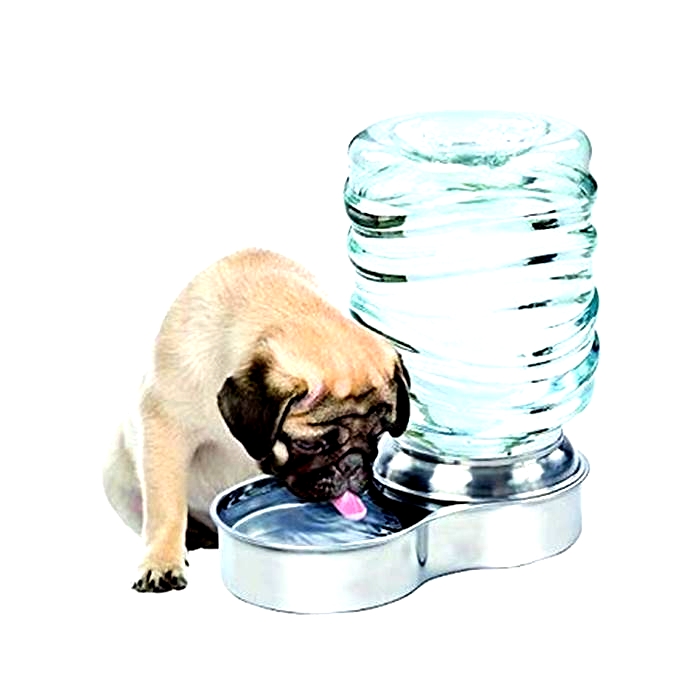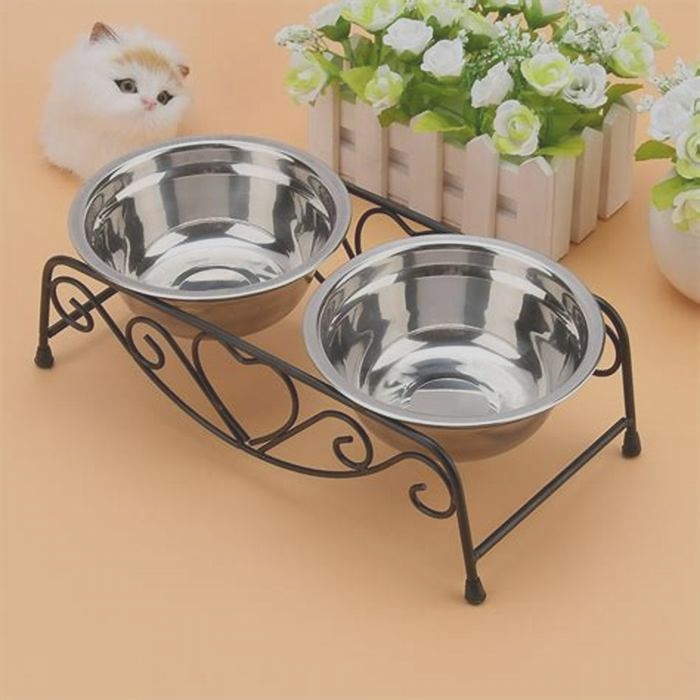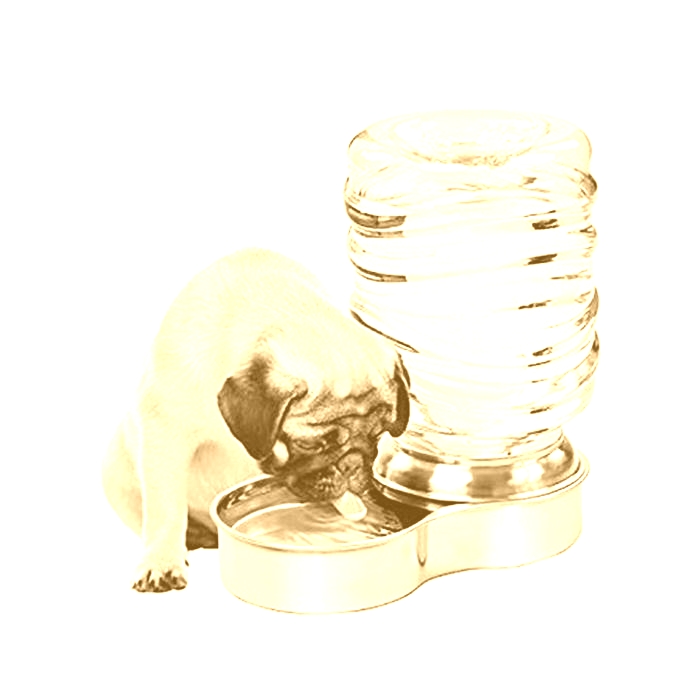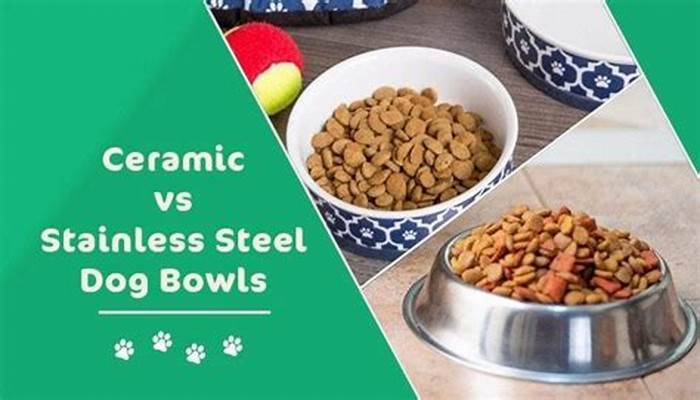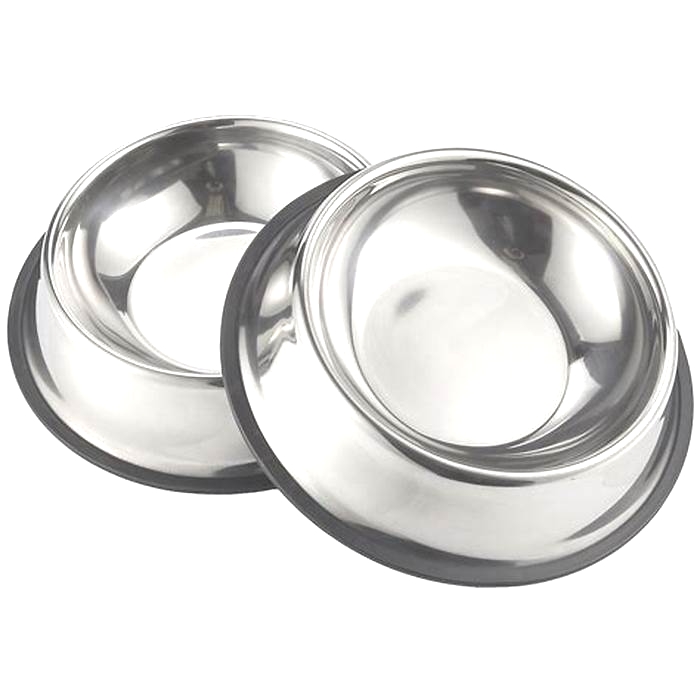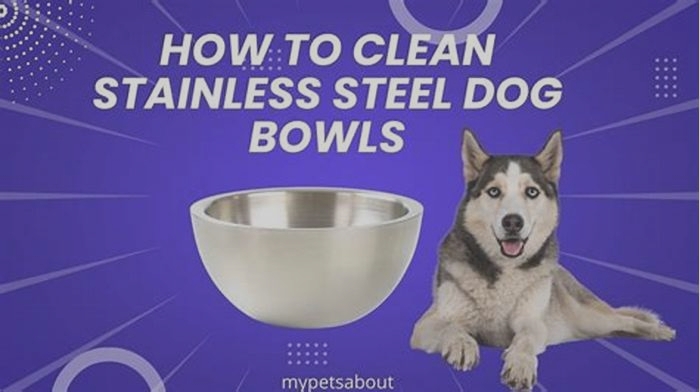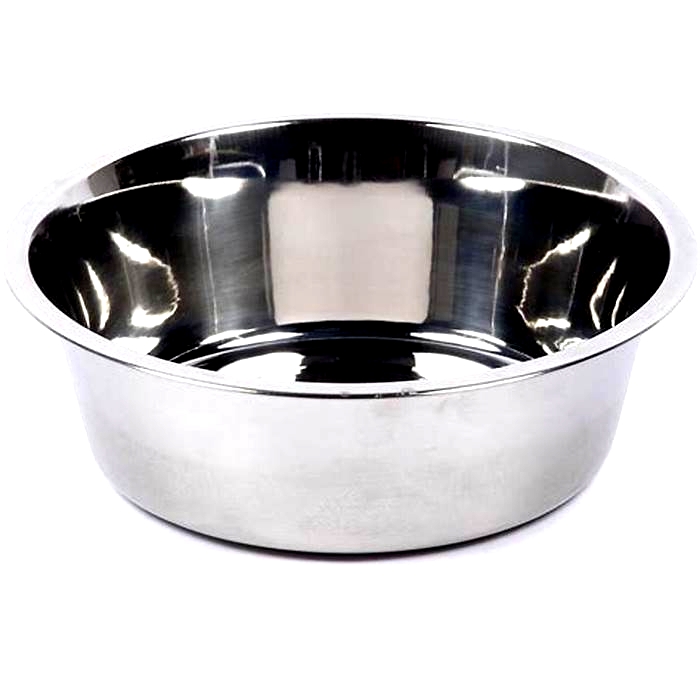Why do dogs not like stainless steel bowls
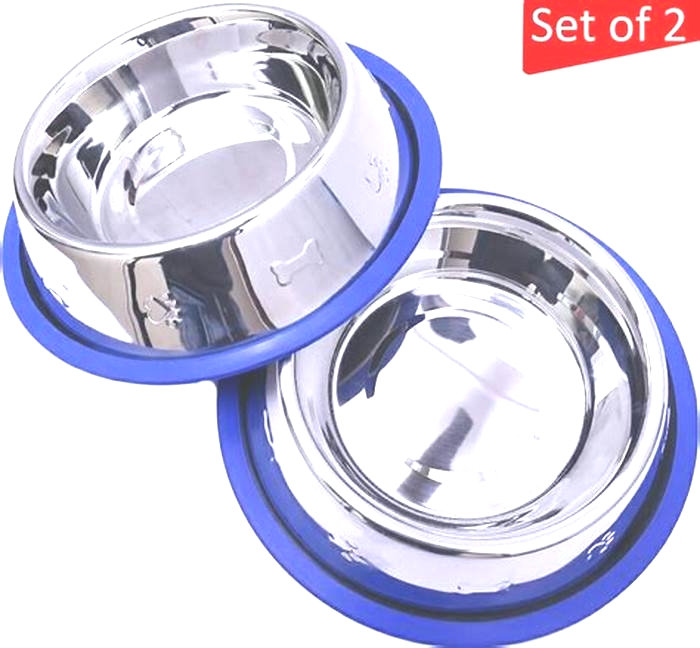
5 Reasons Your Dog Refuses to Eat from a Metal Bowl
As a dog owner, you want your furry companion to be healthy and happy, including ensuring they eat well. But have you noticed that your dog refuses to eat from a metal bowl? You might have tried different tricks and tips to get them to eat from it, but they still seem to prefer other bowls.
Possible reasons why your dog refuses to eat from a metal bowl could be reflections or noise from the bowl, allergic reaction, previous bad experience, discomfort due to the shape or size of the bowl, or simply preference for other materials.
This behavior can be frustrating and confusing, especially if youve always used a metal bowl for your dogs food. In this article, well explore 5 reasons why your dog refuses to eat from a metal bowl, so you can understand your pets behavior better and find a solution that works for both of you.
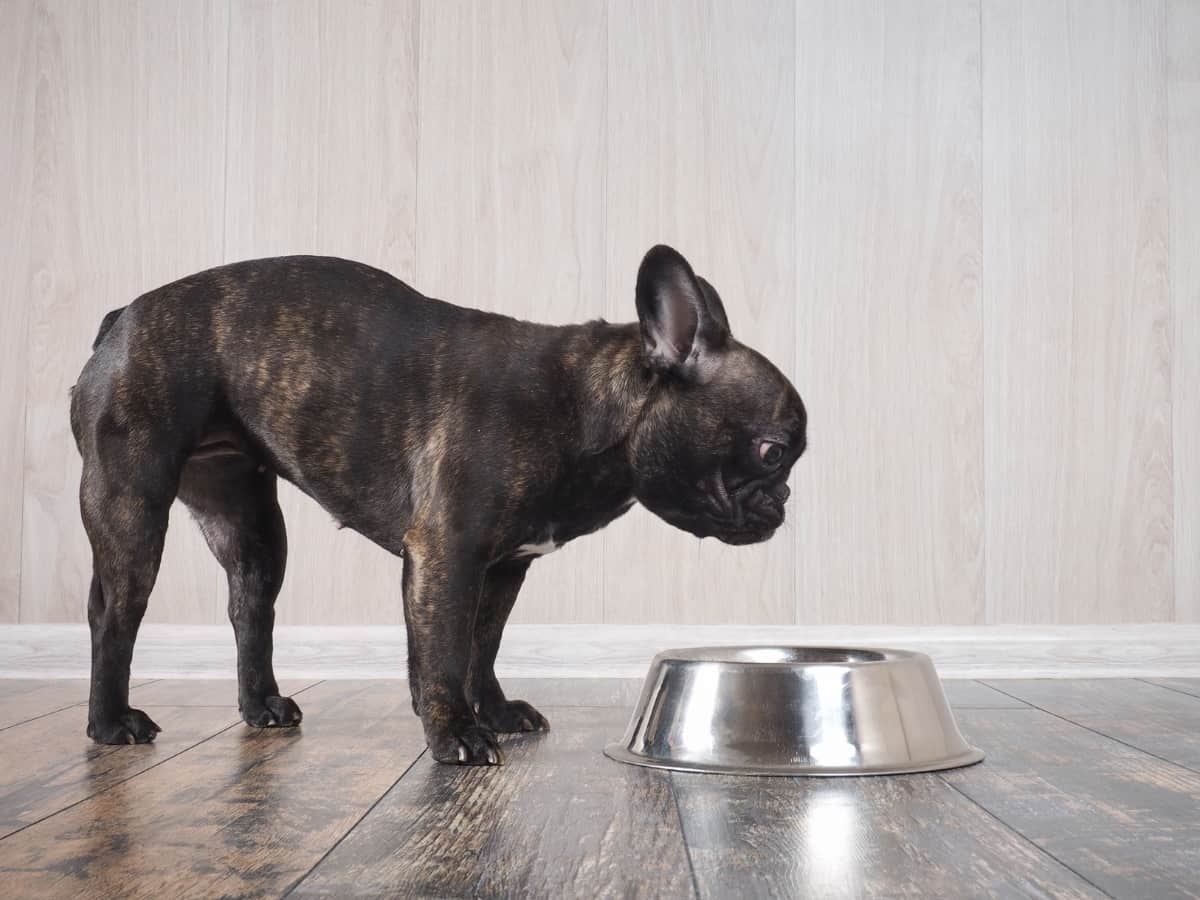
Why Wont My Dog Eat Out Of His Metal Bowl?
So, youve just purchased your furry friend a nice new shiny metal bowl only to observe him refuse to eat from it, and you wonder what this canine behavior is all about. There are several reasons why your dog might be avoiding their metal bowl. Lets dive into the top five reasons in more detail.
1. Reflections Or Glare Of The Metal Bowl
Some dogs can be pretty picky regarding their food bowl. As a dog owner, Ive seen some dogs refuse to eat from a metal bowl because of reflections or glare that bounce off the shiny surface. It might not seem like a big deal to us, but for our four-legged pals, it can be distracting or even scary.
Some metal bowls can be particularly reflective, which means that any light or movement around them can create even more glare. This can be especially problematic if windows are casting light nearby or the bowl is in an area with a lot of foot traffic.
The jangling sound that some metal bowls make when they move can also be alarming for your pup. Also, if your dogs metal tag jangles against the metal bowl as they bend down to eat, might be off-putting for them.
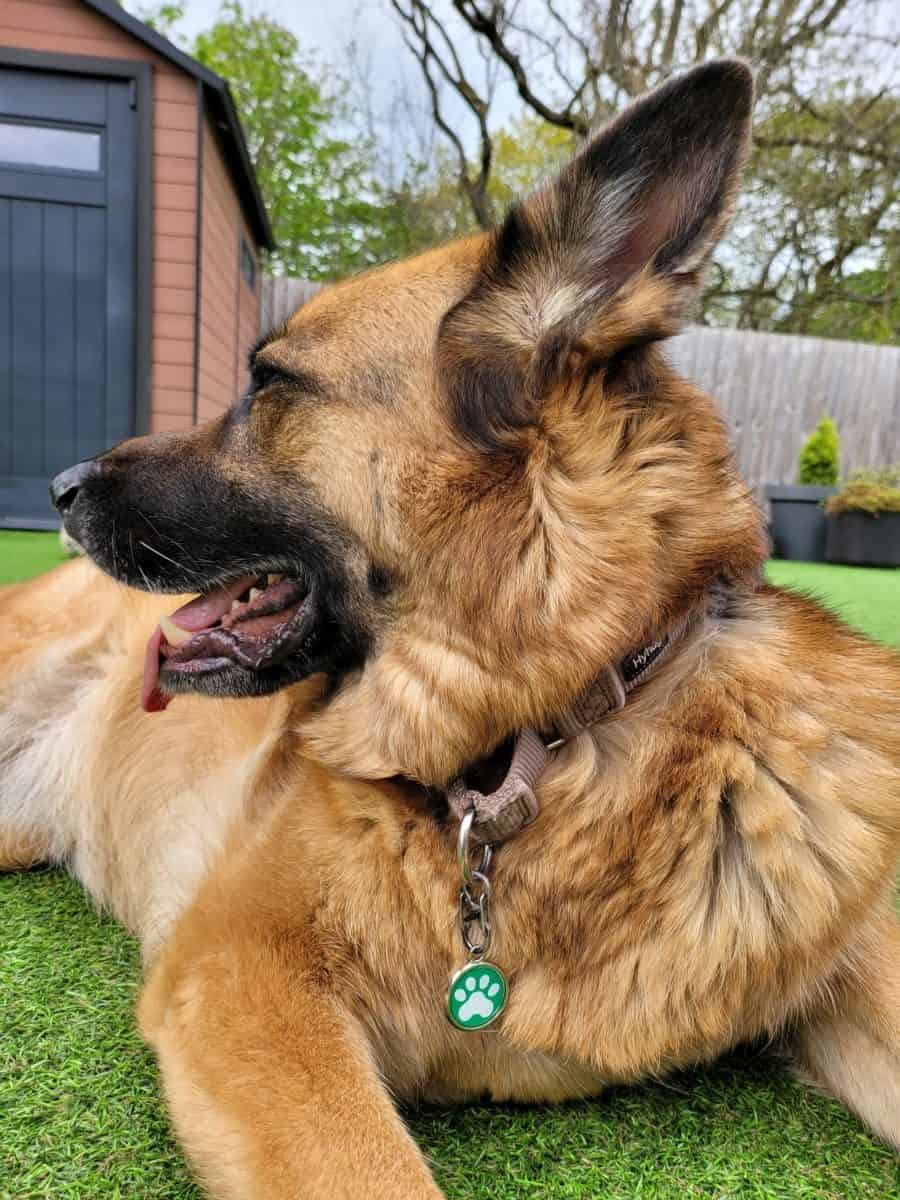
If youre dealing with a similar situation, its worth looking at the environment around the food bowl. Is there anything nearby that might be causing reflections or glare? Would moving the bowl to a quieter area help?
Sometimes, a small adjustment can make all the difference in getting your dog to feel more comfortable and confident during mealtime.
Watch This Dog Become Scared Of His Reflection In His Food Bowl
2. Sensitivity To The Taste Or Smell Of A Metal Bowl
My brother once had a Border Collie who refused to eat from a metal bowl. He tried just about every type of food bowl under the sun to try and get his picky pup to eat.
One reason your dog refuses to eat from a metal bowl is their sensitivity to the taste or smell of the metal. It might sound a little weird, but dogs have some seriously discerning taste buds!
Some metal bowls can have a slightly metallic taste or odor, which can be enough to stop your dog from eating its food altogether. And who can blame them? I dont think Id be too keen on eating off a plate that tasted like a penny.
Plus, some dogs might have a more acute sense of smell than others, which means that even a subtle odor from a metal bowl can be off-putting.
If youre dealing with a similar situation, try out different types of bowls to see if your dog responds better to another material. Ceramics, plastic, and glass are all good options to consider. And if youre set on sticking with a metal bowl, thoroughly wash it before each use to eliminate lingering tastes or smells.
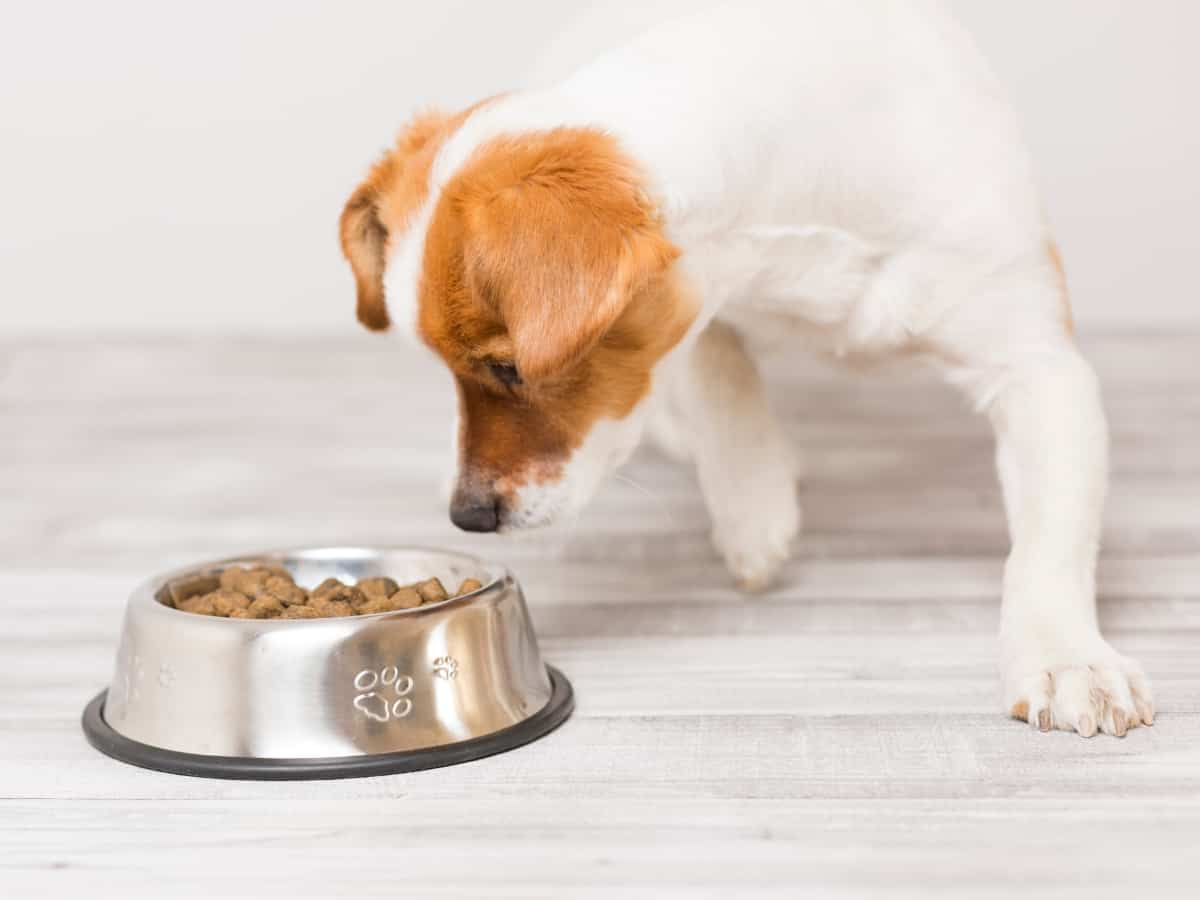
3. Allergic Reaction To The Metal, Causing Discomfort Or Illness
I never realized that some dogs could have an allergic reaction to the metal in their food bowl. But it turns out that some dogs can be sensitive to certain metals, which can cause discomfort or even illness. So, if your dog is refusing to eat from a metal bowl, it might be worth considering whether theyre having an allergic reaction.
It seems that some dogs can be allergic to metals like nickel or stainless steel, which can be found in many metal bowls. Symptoms of an allergic reaction can include itching, redness, or irritation around the mouth and nose, as well as vomiting or diarrhea.
Its not a fun experience for anyone involved, so if you suspect your dog might be allergic to their bowl, its best to switch to a different material.
4. Previous Bad Experiences With A Metal Bowl, Such As Injury Or Discomfort
As a dog owner, Ive come to realize that dogs have long memories. Many studies have shown that dogs remember by association.
Sometimes, those memories can make them hesitant to do things theyve had bad experiences with in the past. This includes eating from a metal bowl.
If your dog is refusing to eat from a metal bowl, its possible that theyve had a bad experience with one in the past. One sign of this behavior is that theyll only eat if hand fed.
For example, maybe your dog accidentally got their tongue stuck in a metal bowl, or it had a bad spill and got hurt while eating. Or maybe they just found the bowl uncomfortable to eat from.
Whatever the case may be, its possible that your dog is associating metal bowls with negative experiences.
If this is the case, it might take some time and patience to help your dog feel more comfortable with eating from a metal bowl again.
One thing to try is to gradually introduce the metal bowl back into your dogs routine, starting with short feeding sessions and slowly increasing the amount of time they spend eating from the bowl.
5. Condition Of The Bowl, Such As Scratches Or Rust, Making It Unappetizing Or Unsanitary
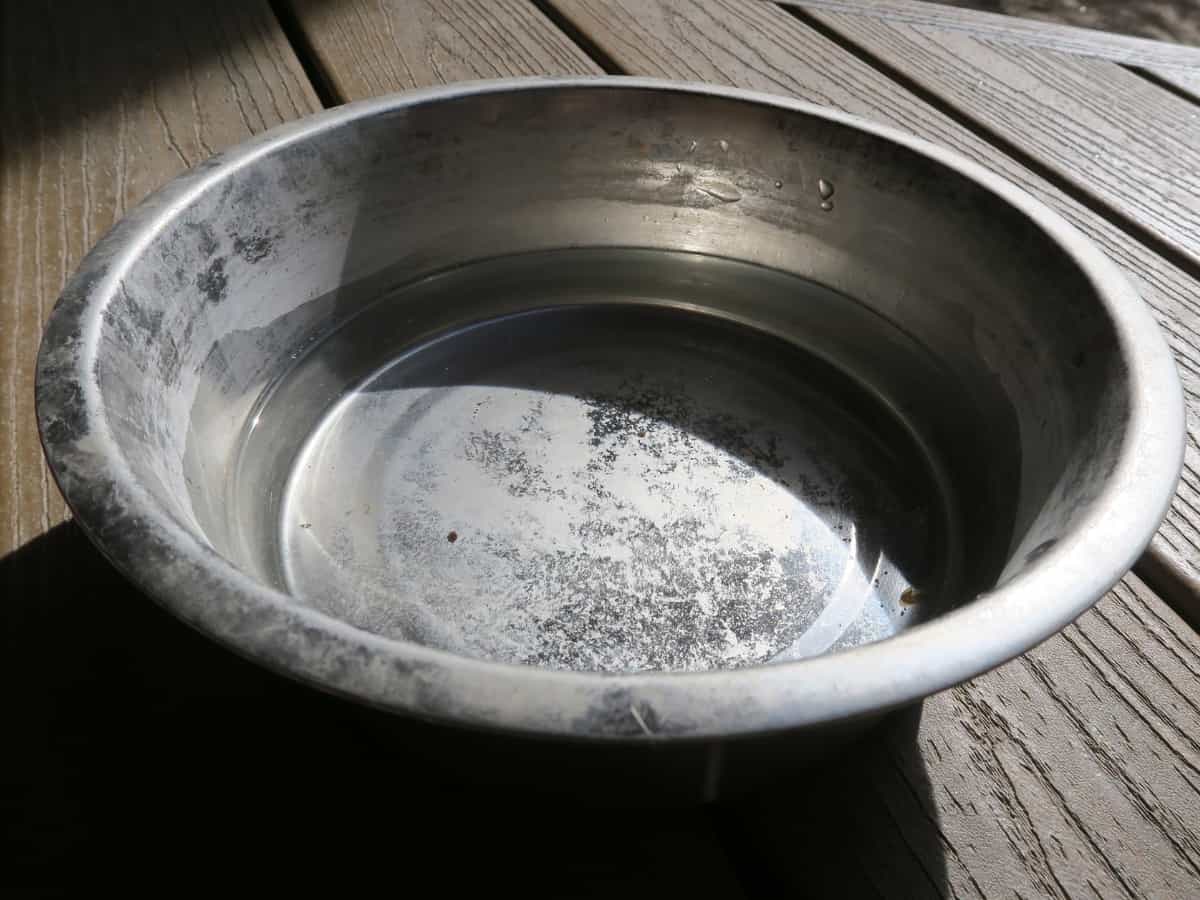
I know that dogs can be pretty particular about their food bowls. And who can blame them? Would you want to eat out of a dirty, scratched-up bowl?
If your dog refuses to eat from a metal bowl, the condition of the bowl may be the issue. Over time, metal bowls can become scratched, rusted, or otherwise damaged, making them unappetizing or unsanitary.
If your dog is turning their nose up at their metal bowl, take a closer look at the condition of the bowl itself. Are there any scratches or dings that might be putting your dog off? Does the bowl have any rust or other signs of wear and tear?
If so, it might be time to invest in a new bowl. Your dog will thank you for it, and youll feel better knowing theyre eating from a clean and hygienic bowl.
When feeding your furry friend, paying attention to the detail is important. Sometimes, something as simple as the condition of a food bowl can make a big difference in how our dogs perceive their meals. So, if your dog refuses to eat from their metal bowl, look closer and see if its time for an upgrade.
FAQs
How Can I Tell If My Dog Is Sensitive To Metal?
A few signs may indicate your dog is sensitive to metal. These can include refusing to eat from a metal bowl, excessive drooling, vomiting, diarrhea, or skin irritation around the mouth or chin. If you suspect your dog may be sensitive to metal, its best to switch to a different bowl type and consult your vet for further advice.
Can A Dog Develop An Allergic Reaction To A Metal Bowl Over Time?
Yes, a dog can develop an allergic reaction to a metal bowl over time. This can be caused by repeated exposure to the metal, leading to a build-up of antibodies in the dogs system. Signs of an allergic reaction may include itching, redness or rash, and swelling around the mouth or face.
How Often Should I Replace My Dogs Metal Bowl?
The frequency with which you should replace your dogs metal bowl depends on several factors, including how often it is used and how well it is cared for. Generally speaking, metal bowls can last for several years with proper care, but its important to watch for signs of wear and tear, such as scratches, dents, or rust.
If the bowl shows signs of damage, its best to replace it to ensure your dogs safety and health. Additionally, if your dog shows discomfort or reluctance to eat from the bowl, it may be time for a replacement.
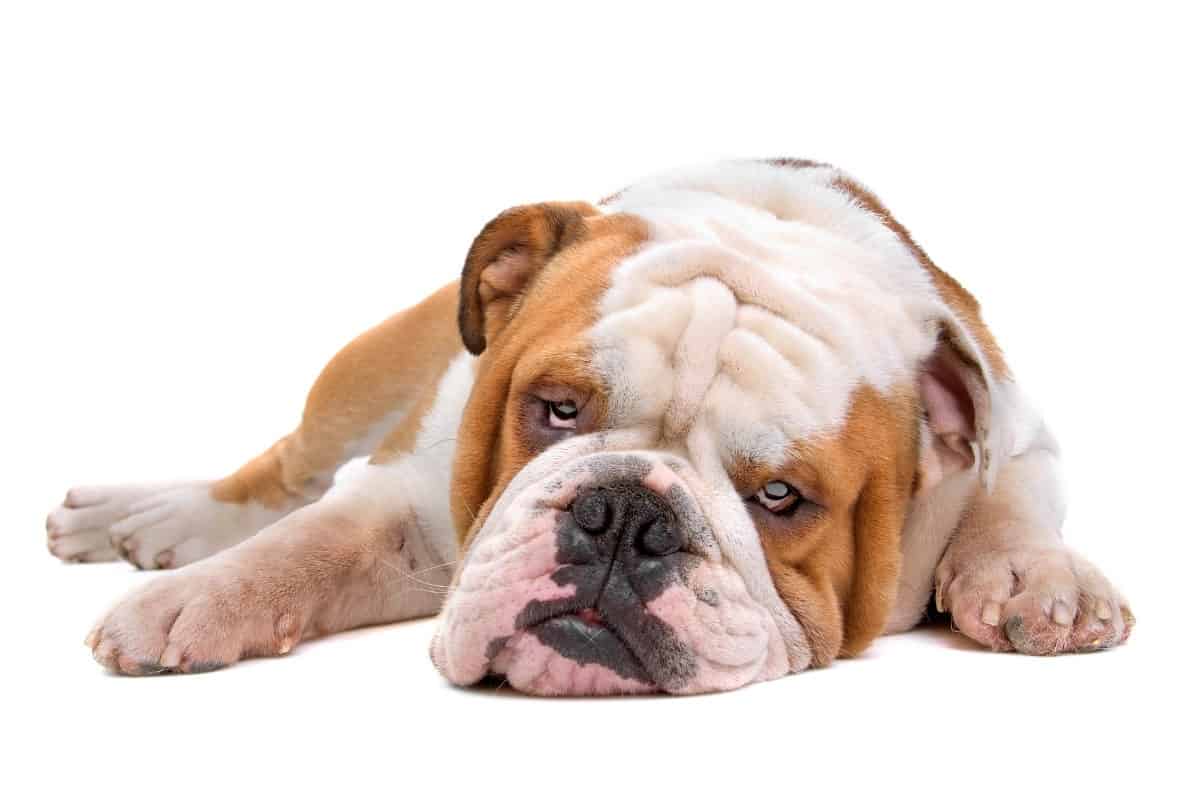
What Are The Signs That A Metal Bowl Is Making My Dog Uncomfortable?
Signs that a metal bowl may be making your dog uncomfortable can include refusing to eat or drink from the bowl, strange dog eating behavior, such as pawing at or nudging the bowl, excessive drooling, vomiting, or diarrhea.
Additionally, if your dog shows skin irritation or redness around the mouth or chin, this may be a sign of discomfort.
Related Posts You May Like:
Ceramic vs Stainless Steel Dog Bowl: Which is Better for Your Pet?
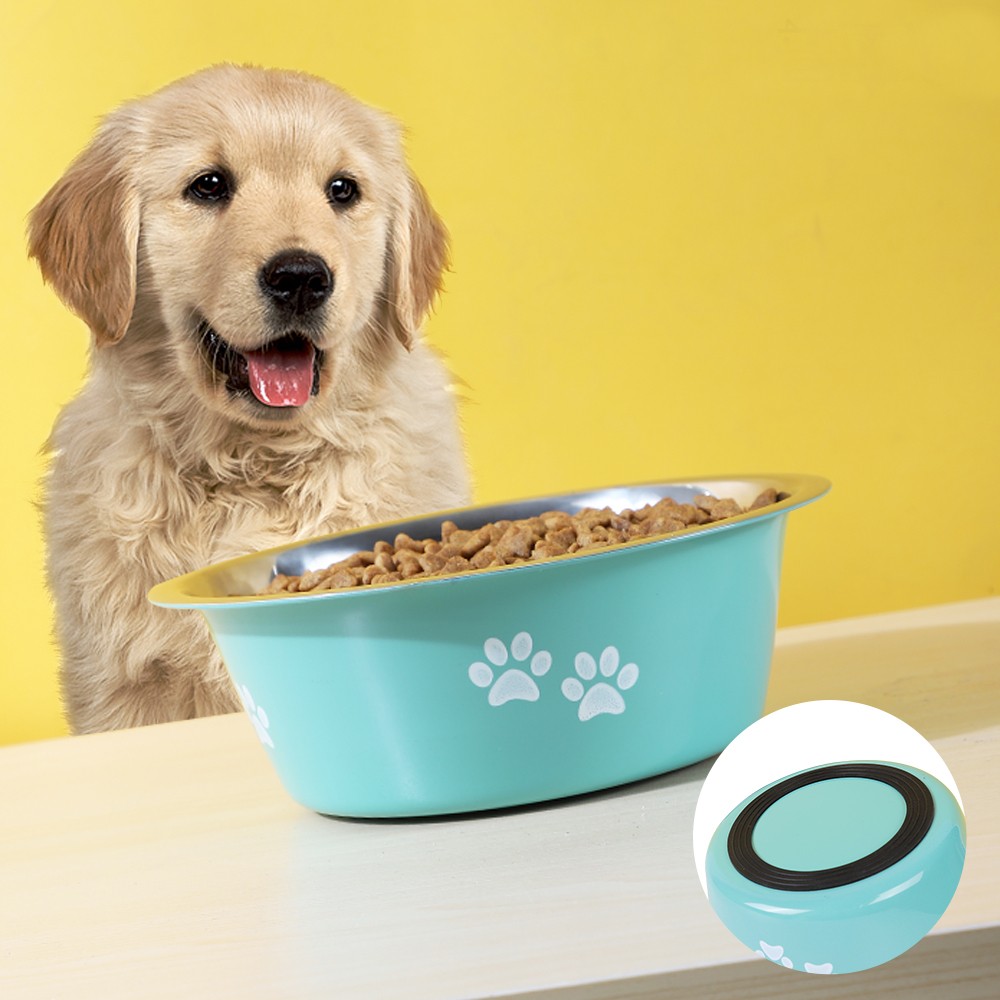
An Overview of Popular Dog Bowl Materials
When it comes to picking the right dog bowl for your four-legged friend, two of the most popular materials pet owners choose from are ceramic and stainless steel. Both offer durability, ease of cleaning, and safety, but they have some key differences when it comes to specifics like antibacterial properties, scratch resistance, and cost.
Ceramic and stainless steel each have their own sets of pros and cons to weigh when deciding which is the better option for your dog. Ceramic bowls can provide an attractive, natural look and feel, but may chip or crack over time. Stainless steel is lightweight and impervious to rust, but some dogs dislike the metallic smell and noisy sound the bowls can produce.
Looking closely at the benefits and drawbacks of ceramic vs. stainless steel dog bowls can help you make the optimal choice to suit your pets needs and your own preferences as a dog owner. Factors like your dogs breed size, any food allergies, habits like vigorous eating or pushing bowls around, and placement of the bowl indoors or outdoors will also influence your decision.
With a wide selection of styles, colors, shapes, and sizes of ceramic and stainless steel dog bowls available today, there are lots of options to provide your dog with safe, comfortable, and attractive dining. Read on for more details on the key differences between these two most popular dog bowl materials.
What Exactly is Stainless Steel?
Stainless steel is a common metal alloy composed mainly of iron and containing at least 10.5% chromium along with elements like nickel, carbon, silicon, titanium, aluminum, copper, nitrogen, and molybdenum. The amount of chromium is key, as it reacts with oxygen to form a thin passive layer of chromium oxide on the surface that acts as a shield against corrosion and rust.
There are many different stainless steel grades and finishes common ones used for dog bowls include type 304 and type 18/8. Type 304 is the most popular and versatile due to its excellent forming and welding properties, durability, and resistance to rust and other corrosion. 18/8 refers to the fact that the steel contains 18% chromium and 8% nickel.
When shopping for stainless steel dog bowls, those made from thicker gauges and food-grade 304 stainless steel are the best choices for durability and safety. Bowls will often be marketed as rust-resistant or no rust when they are fabricated from high-quality stainless steel alloys.
Stainless steel provides a nonporous, smooth surface that makes cleaning easy by hand or in the dishwasher. It can withstand repeated dishwashing without losing its shine or having the surface degrade over time. Thanks to its rust-resistant properties, stainless steel is a great choice for both indoor and outdoor dog bowls.
Benefits of Using Stainless Steel Dog Bowls
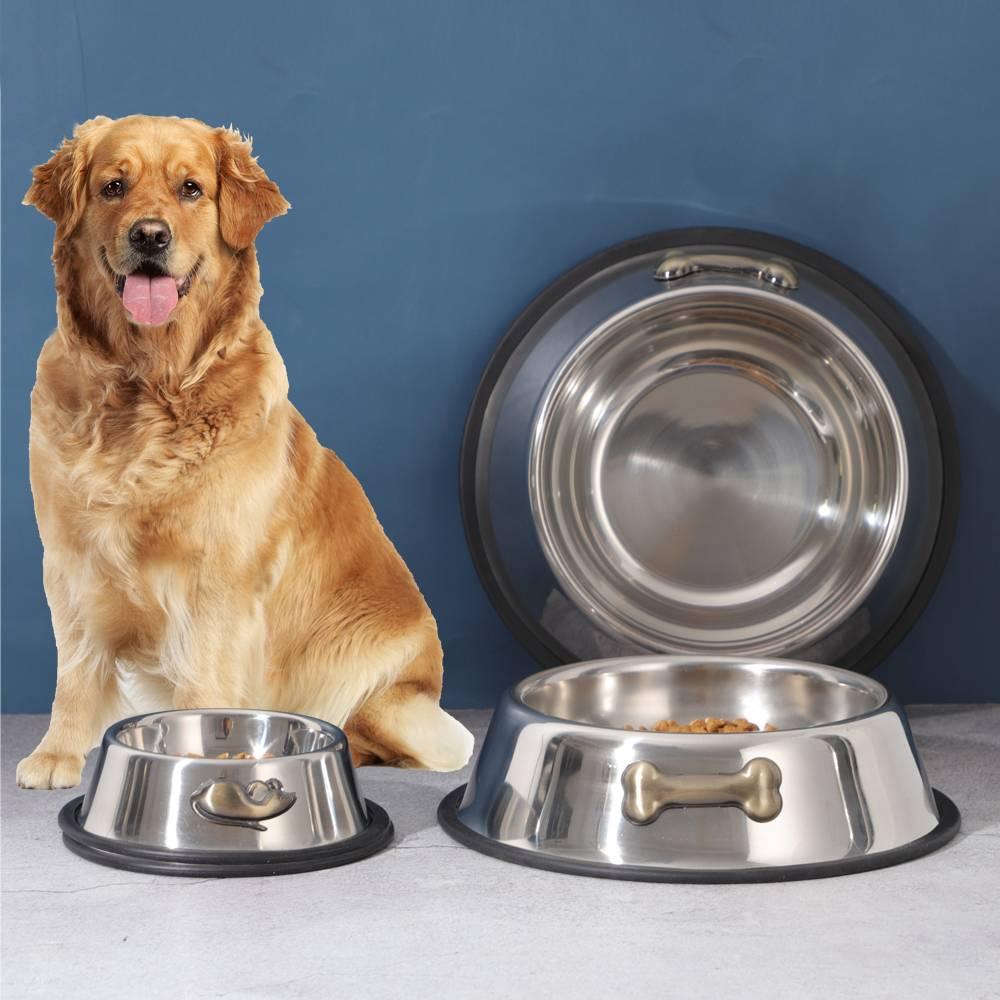
Stainless steel is one of the most popular choices for dog bowls due to many beneficial features:
- Extremely durable stands up well to dents, biting, and rough handling
- Rust-resistant for lifelong usage indoors and outdoors
- Dishwasher safe and easy to sanitize to prevent bacteria
- Non-porous surface does not trap food or allow bacterial growth
- Lightweight construction is built for portability
- Does not chip or crack with normal use
- Available in a variety of sizes to suit any dog
- Often less expensive than ceramic bowls
The easy care and hardy nature of stainless steel make it an ideal material for dog bowls in busy, active households. Stainless steel bowls can serve any breed well, from tiny Chihuahuas to giant Mastiffs and anything in between. They provide a chew-resistant, non-absorbent, odorless, and stain-free feeding solution suitable for wet and dry food.
Potential Drawbacks of Stainless Steel Bowls
While stainless steel has many positives as a material for dog bowls, there are a few potential disadvantages to consider as well:
- Can be noisy when placed on hard surfaces, which may disturb some dogs
- Does not offer as much variety in style and decorative designs as ceramic
- Some dogs may dislike the metallic smell and taste of stainless steel
- Bowls must be thoroughly scrubbed to remove grease, fat, or oil residues
- Not as visually appealing for in-home feeding as ceramic bowls
- Prone to showing scratches, scuffs, and dents over time with rough use
- Heavier than some other materials if portability is a concern
- May contain nickel or other metals that very rarely cause allergy issues
- Not recommended for dogs with metal allergies or sensitivities
The noise factor of stainless steel hitting a food dish holder or kennel floor is one of the most common complaints from owners. Some dogs are also picky about the smell or taste imparted by stainless steel.
But for the vast majority of canines, high-quality stainless steel dog bowls present no health or safety issues. Any potential drawbacks are generally outweighed by the strength, longevity, and easy maintenance of stainless steel dog dishes.
What is Ceramic Made Of?
Ceramic dog bowls can be made from a variety of different clay-based materials that are shaped while wet and then hardened through high-temperature firing in a kiln. The primary clay types used are earthenware, stoneware, and porcelain.
Earthenware is the most basic type of ceramic, made from natural, reddish-brown clay and fired at lower temperatures up to around 2,200F. Its more porous than other ceramics. Stoneware is harder and less porous thanks to higher firing temperatures reaching 2,200-2,400F. Porcelain, made of white clay containing kaolin, is fired at the highest temperatures of over 2,450F to become non-porous and incredibly hard.
Glazes are often applied to the outer surface of ceramic dog bowls, fusing to the clay body during firing to create a glass-like coating. This waterproofs the bowl and allows for an endless array of colors, patterns, and decorative designs. Unglazed ceramics showcase the natural terracotta color of the clay.
The specific clay composition, production method, firing temperature and time, and glazing techniques all contribute to the properties of the finished ceramic dog bowl, including durability, strength, and how smooth the surfaces will be.
The Pros of Ceramic Dog Bowls
Many dog owners prefer ceramic dog bowls thanks to benefits such as:
- The attractive, natural aesthetic for home dcor
- Huge variety of shapes, colors, and decoration designs
- Smooth, non-abrasive surfaces are gentle on the dogs face/nose when eating
- Can be personalized with the dogs name or design
- Generally quiet and non-slip when placed on the floor
- Easy to thoroughly clean and sanitize
- Durable if high-fired stoneware or porcelain
- Handcrafted appeal from artisan bowl makers
- A cooler surface keeps water from warming up
Glazed ceramic bowls are also stain-resistant, non-absorbent, and non-porous. Customized ceramic dog bowls can add a touch of artistry and whimsy to a pets dining experience. Stoneware and porcelain ceramic dog dishes provide a solid combination of beauty, safety, and functionality.
The Cons of Ceramic Feeding Bowls
On the downside, some drawbacks of ceramic dog bowls to be aware of include:
- More fragile can chip, crack or shatter if dropped
- Prone to staining from colored foods over time
- Porous unglazed clay can trap bacteria if not cleaned frequently
- Earthenware lacks durability for outdoor use
- Heavier than stainless steel or plastic bowls
- Noisy if dragged on hard flooring
- Cost is generally higher than stainless steel
- Not ideal for dogs that are aggressive chewers
- Limited styles and sizes compared to other materials
The risks of chipping and bacterial issues mean close supervision is required when dogs use ceramic bowls. Porous earthenware ceramics provide fewer benefits than high-fired stoneware or porcelain. But with proper care and maintenance, ceramic dog bowls can be a safe and charming feeding solution.
Ceramic vs. Stainless Steel A Direct Comparison
When weighing ceramic vs. stainless steel dog bowls, a few key differences emerge:
| Comparison Points | Ceramic | Stainless Steel |
| Cost | More expensive | Typically more affordable |
| Durability | Can chip or crack | Very durable |
| Cleaning | Requires more effort | Easy to clean and sanitize |
| Bacteria Resistance | Can absorb bacteria if unglazed or porous | Resists bacterial growth |
| Styles and Designs | Lots of variety in colors and patterns | Limited in styles |
| Noise | Quiet | Can be noisy |
| Outdoor Use | Not recommended | Great for outdoor use |
Stainless steel dog bowls clearly excel when it comes to durability, ease of care, and cleanliness important factors for pets health. But ceramic bowls offer visual appeal and customization that stainless steel cannot match.
Many owners opt to use stainless steel for water and ceramic for food to get the best of both materials. Its also popular to utilize stainless steel outside and ceramic bowls inside the home for easier blending with interior dcor. By understanding the strengths of each material, pet owners can make an informed decision on which better suits their needs.
What Other Materials for Dog Bowls Are Available?
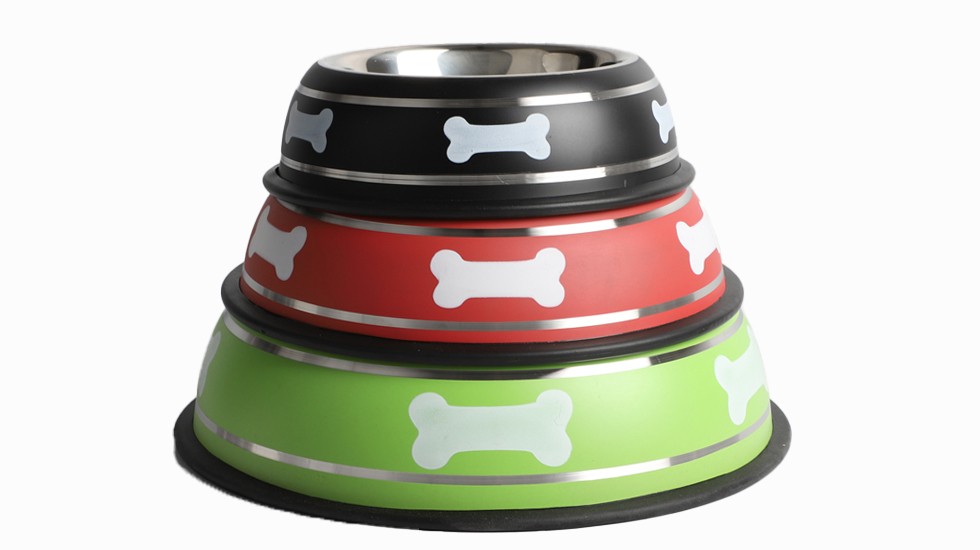
While stainless steel and ceramic are two of the most popular choices, dog bowls are available in a few other materials that each have their own pros and cons:
| Material | Pros | Cons |
| Plastic | Inexpensive, lightweight, fun colors/designs | Easily chewed and damaged, retains odors, may leach chemicals |
| Silicone | Durable, temperature resistant, and collapsible for travel | Absorbs stains and odors, degrades over time |
| Glass | Non-porous allows visibility of food | Heavy, not durable, noisy, could shatter |
| Wood | Stylish natural look | Prone to bacteria in pores, not for everyday use |
Each material has attributes to consider. But for pets who need to use dog bowls regularly or for outdoor use, stainless steel and glazed ceramic remain the top choices for their superior durability, cleanliness, safety, and functionality.
Safety Considerations for Each Material
Its important to keep health and safety in mind when selecting dog bowl materials:
Stainless Steel Choose food-grade 304 stainless steel; be cautious with pups that may have metal allergies
Ceramic Inspect glaze for lead-free certification; avoid old ceramics with potential lead glaze; prevent cracking
Plastic Ensure BPA-free; discard if scratched or cracked; dont use with hot liquids
Silicone Be sure silicone is food-grade quality; replace the bowl periodically as silicone breaks down
Glass Discard if any chips or cracks appear; supervise use to prevent shattering
Wood Seal untreated wood with a pet-safe finish; monitor for damage by providing crevices for bacteria
Any dog bowl material can present hazards if quality standards are not met or they are used inappropriately. But purchasing high-quality products from reputable manufacturers, following all safety recommendations, and properly caring for and cleaning dog bowls help minimize risks.
Matching Your Dogs Needs to Bowl Material
| Dogs Need | Best Bowl Material |
| Active chewers | Stainless steel or durable stoneware ceramic |
| Fast eaters | Wide stainless steel bowls, some with ridges |
| Food allergies | Stainless steel |
| Traveling | Collapsible silicone bowls |
| Messy drinkers | Non-porous ceramic and stainless steel |
| Arthritic dogs | Lightweight stainless steel |
| Flat-faced dogs | Shallow ceramic bowls |
| Senior dogs | Raised ceramic and stainless steel bowls |
| Outdoor use | Stainless steel |
| Small dogs | Appropriately sized ceramic and stainless steel |
Considering your own priorities along with your dogs needs will naturally guide you toward the optimal material and style of dog bowl for your pet.
Tips for Keeping Your Dogs Bowl Clean
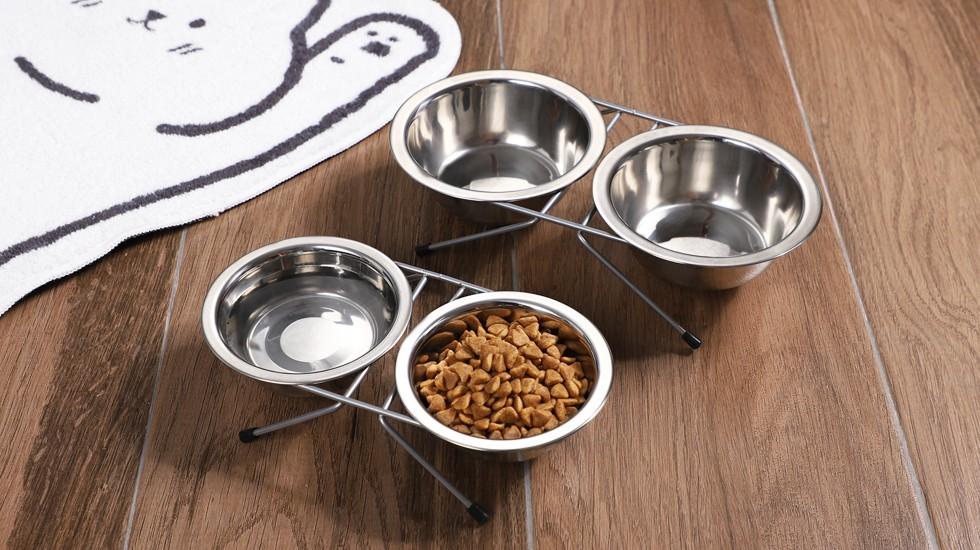
Maintaining the cleanliness of dog bowls helps prevent bacterial or fungal buildup that could make your dog sick. Useful tips include:
- Wash bowls in hot, soapy water after each use
- Sanitize weekly with diluted bleach rinse thoroughly after
- Use the dishwasher for safe, easy cleaning of ceramic/stainless bowls
- Outdoor bowls should be brought in and washed frequently
- Discard cracked ceramic; replace scratched stainless steel
- Check under bowls for trapped debris or moisture
- Avoid plastic food storage bowls which can harbor bacteria
- Washstands, mats, and elevated bowls regularly too
- Allow bowls to fully air dry after washing
By practicing good bowl hygiene along with common sense care and maintenance specific to your chosen material, your dogs bowls should provide safe, healthy feeding for years to come.
Conclusion: Choosing the Right Bowl for Your Dogs Health
Ceramic and stainless steel dog bowls both have excellent qualities that make them top choices for pet owners. Stainless steel excels at durability, affordability, and easy cleaning. Ceramic offers beautiful styles and custom designs that fit home dcor. Safety, cleaning convenience, bacteria resistance, and resilience for active dogs favor stainless steel. But the visual appeal and variety of ceramic also appeal to many pet owners.
Considering your dogs needs and your own preferences will guide you to the ideal material and bowl design. Whether ceramic, stainless steel or even a combination of both, using the proper high-quality dog bowl for your faithful companion supports good nutrition and overall health. With the right bowl, you can be assured your dog has a healthy, happy place to eat both now and for years to come.


